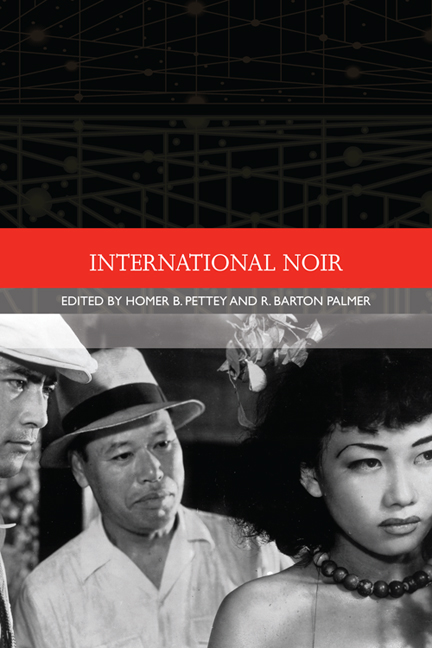Book contents
- Frontmatter
- Contents
- List of Illustrations
- Acknowledgements
- Notes on the Contributors
- Traditions in World Cinema
- Introduction: The Noir Impulse
- 1 British Noir
- 2 French Noir 1947–79: From Grunge-noir to Noir-hilism
- 3 French Neo-noir: An Aesthetic for the Policier
- 4 Early Japanese Noir
- 5 The Gunman and the Gun: Japanese Film Noir since the Late 1950s
- 6 Darker than Dark: Film Noir in its Asian Contexts
- 7 Nordic Noir and Neo-noir: The Human Criminal
- 8 Indian Film Noir
- 9 The New Sincerity of Neo-noir
- 10 Post-noir: Getting Back to Business
- Selected Bibliography of International Film Noir
- Selected Filmography of International Film Noir
- Index
Introduction: The Noir Impulse
Published online by Cambridge University Press: 05 August 2016
- Frontmatter
- Contents
- List of Illustrations
- Acknowledgements
- Notes on the Contributors
- Traditions in World Cinema
- Introduction: The Noir Impulse
- 1 British Noir
- 2 French Noir 1947–79: From Grunge-noir to Noir-hilism
- 3 French Neo-noir: An Aesthetic for the Policier
- 4 Early Japanese Noir
- 5 The Gunman and the Gun: Japanese Film Noir since the Late 1950s
- 6 Darker than Dark: Film Noir in its Asian Contexts
- 7 Nordic Noir and Neo-noir: The Human Criminal
- 8 Indian Film Noir
- 9 The New Sincerity of Neo-noir
- 10 Post-noir: Getting Back to Business
- Selected Bibliography of International Film Noir
- Selected Filmography of International Film Noir
- Index
Summary
International noir may well be a tautology, since film noir from its inception has always been a culturally diverse genre, style, sensibility and movement. Paul Cooke has argued that Hollywood's global expansion can be explained not only by its ‘providing the world with the most appealing film aesthetics and narrative structures’, but also more recently by its being ‘fiercely protective of its distribution dominance, lobbying for increasing global deregulation during the GATT and subsequent World Trade Organisation talks’. Defining international noir poses similar problems for designation of any type of ‘world’, ‘international’ or ‘global’ cinema. As Rosalind Galt and Karl Schoonover contend for ‘art cinema’, ‘world’ suggests ‘a fetishistic multiculturalism’, while, for them, ‘international’ tends to be too Eurocentric and too associated with Marxist film history; hence, they choose ‘global’ as a somewhat problematic alternative. If ‘international’ noir incites the wrath of peevish theorists, so be it, particularly since noir, in a world and global context, requires an analytic sensitivity to aesthetic and narrative influences migrating across countries and continents. Indigenous cinematic art needs to be acknowledged in its own right, but, as with European and especially American noir, it developed as a result of responses to and absorption and adaptation of other film cultures. International noir invariably entails recategorisation of the history, development and expansion of film noir, as well as investigation of the artistic impulse to represent global modernity and its psycho-social anxieties, its political dilemmas and violence, and its challenge to traditional views of gender by means of this pervasive aesthetic.
The late 1950s to the early 1960s were expansive years for international cinema, as can be observed by the example of Wang Tianlin's The Wild, Wild Rose (Yau mooi gwai ji luen, 1960). This Mandarin Chinese musical film noir concerns a chanteuse seductress (Grace Chang) in Wan Chai, a notorious pleasure district of Hong Kong. As a musical noir, the film already reveals the mixed cultural influences that have created late-twentieth-century global cinema. This admixture of styles, generic formula and cinematic aesthetics, especially in the Cold War era, was certainly due in part to the dominance of Hollywood worldwide. Still, the adaptation of musical styles takes on its own unique Chinese sensibility, and represents a maturing of Hong Kong style from the 1950s.
- Type
- Chapter
- Information
- International Noir , pp. 1 - 13Publisher: Edinburgh University PressPrint publication year: 2014



